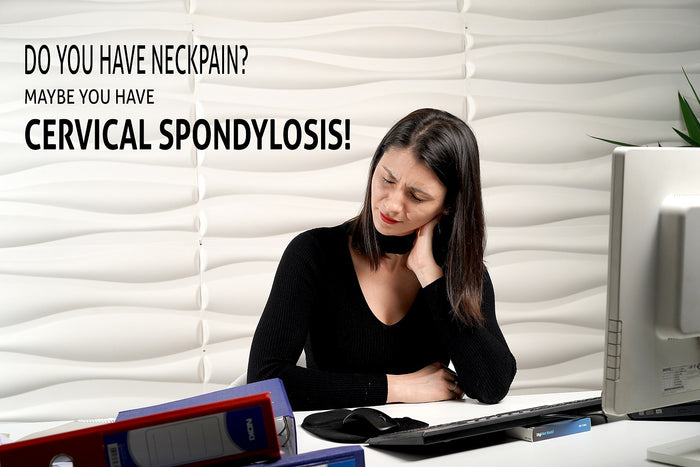What is Cervical Spondylosis? How to Treat & Prevent it!


Certainly, at least one of your friends told you he's suffering from cervical spondylosis, isn’t that? But have you ever wondered what this means? How is cervical spondylosis manifested, what are its causes, and especially how can you deal with it if you will face it at some point? In this article you will find an answer for all your questions.
What is Cervical Spondylosis?
Cervical spondylosis is a condition that is more and more common nowadays. This encompasses degenerative processes located at the level of intervertebral joints and cervical spine discs. Although most of the time the main cause is aging, but also a number of other factors are incriminated in the appearance of spondylosis. According to studies conducted in recent years, over 85% of people over the age of 60 suffer from this condition. The risk of developing cervical spondylosis is increased and among younger, sedentary people who spend a lot of time in front of the computer, adopting poor posts.

The Causes of cervical spondylosis
1. Osteophytes
Known in popular language as “stabs” are bone formations that the body produces in order to strengthen a weakened spine. The directions in which these osteophytes develop are chaotic, and therefore, they often exert pressure on the marrow or nerves and trigger the sensation of pain.

2. Dehydrated intervertebral discs
Between each vertebra that makes up the spine is the vertebral discs. They have the appearance of "cushions" and their role is to absorb the pressure to which the spine is subjected daily (raising objects, twisting, etc.). The discs have a firm outer fiber ring and inside they are made of a gel-like substance (nucleus pulposus). Over time, the discs become thin and also dehydrate, and the pressure they can take decreases, and the vertebrae are subject to greater stress, which can cause pain.

3. Herniated disc
The fibrous ring, though powerful, can yield to repeated poor movements or bad body posture. The gel, nucleus pulposus, is no longer held inside the disk so it migrates to the outside where it meets the marrow and the nerves. The pressure exerted by nucleus pulposus on nerve formations often causes pain that irradiates at the level of the upper limb and numbness, tingling etc.

4. Trauma
Following traumas localized in the cervical spine, degenerative processes can be accelerated.
Risk factors
- Age - specific degenerative processes
- Traumas located in the cervical spine
- Keeping your neck in a position that is uncomfortable for a long time or making repetitive movements throughout the day (texting or working on the laptop/pc hours/day)
- Genetic factors
- Smoking
- Sedentarism and obesity
Symptoms
- Pain around the shoulder blade
- Pain and numbness in the arm +/- fingers
- Muscle weakness
- Headache generally located at the neck
- Limiting neck mobility
Diagnosis
Diagnosis of cervical spondylosis is established only by the specialist (neurologist) based on clinical examination and para clinical examinations (radiographs, C.T., R.M.N., electromyography etc.)
Treatment
1. Physical therapy
Most times the doctor guides the patient diagnosed with cervical spondylosis to a physical therapist. Considering the individual particularities of the patient, the therapist will establish the main goals and means to treat the disease as efficiently as possible.Pain relief will be achieved by restoring optimal muscle tone and a harmonious body posture, using exercise, self-care, and various relaxation techniques.
2. Medications
The medical treatment will be determined by the physician in accordance with the patient's symptomatology. Most of the time includes non-steroidal anti-inflammatory, myorelaxant etc.
3. Surgery
In the case of severe conditions where the other treatment variants do not work, surgical intervention is recommended.
What can you do at home?
1. Exercises
At the recommendation of the specialist (physical therapist), exercises that involve mobilization of the cervical area can be performed at home to improve mobility.We have for you 3 Video Exercises to make it at home.
2. NeckFix
An extremely useful device, easy to use in the comfort of your own home is NeckFix Traction Device. By making a slight elongation in the cervical spine, it takes over the labor of the stabilizing muscles and helps to relax it.

Check here : www.neck-fix.com

